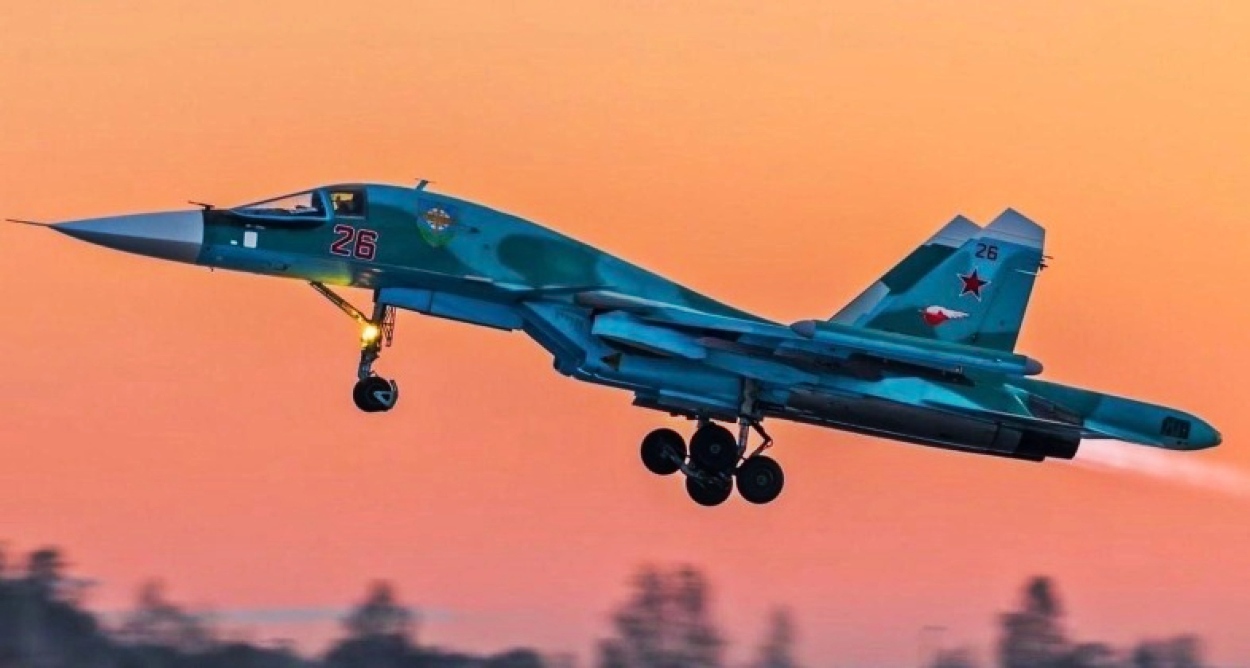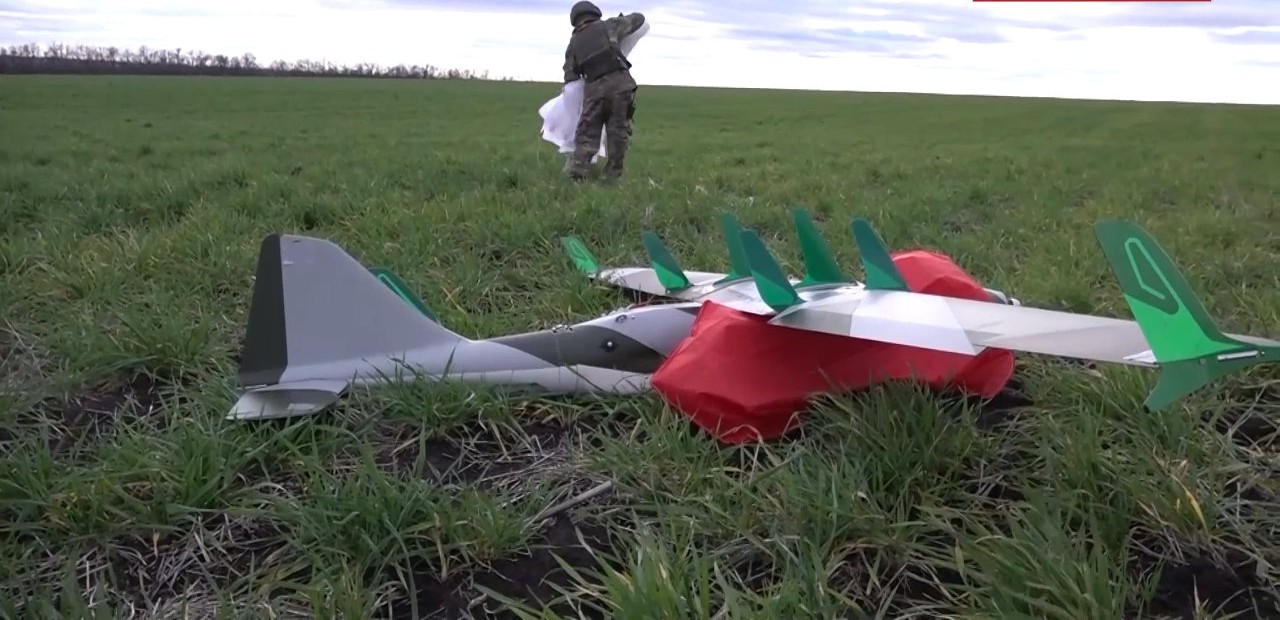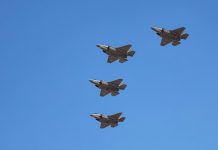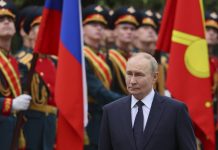Fighting against technologically inferior adversaries, like Iraq and the Taliban, electronic warfare (EW) had become a forgotten discipline for the Western armed forces. However, the Ukraine War has bought EW back into the limelight.
Russian news agency Ria Novosti recently claimed that the Russian twin-engine long-range strike aircraft Sukhoi Su-34, which goes with the nom de guerre ‘Fullback’ received new protection against enemy electronic warfare equipment, including protection against foreign-made electronic warfare systems, for use in the special military operation zone.
The report read: “Su-34s also operate in the near zone, in particular, with guided bombs against the positions of the Armed Forces of Ukraine. Therefore, they are within the reach of the enemy’s electronic warfare equipment. Therefore, technical measures were taken to protect the Su-34 systems from electronic warfare of Ukrainian and Western weapons platforms.”
Combining the Khibiny electronic countermeasure complex with the SAP-14 and SAP-518 active jamming stations provides reliable protection to Su-34s against air defense. This has spawned the hyperbole claims that Su-34s can disappear from enemy radar screens.
Su-34s delivered since July 2022 (after the beginning of the Russian invasion of Ukraine) have notably been built to an enhanced standard as the Su-34M variant and alongside the baseline Su-34M fighters specialized variants built for electronic warfare or reconnaissance.
Director general of Russia’s United Aircraft Corporation Yuri Slyusar has claimed that the Su-34M has double the combat capacity of the original Su-34, which began to enter service in 2014, with an outstanding new feature being its dedicated interface for three different types of sensors – UKR-RT electronic search pod, the UKR-OE Camera pod, and the UKR-RL synthetic aperture radar. This maximizes situational awareness.
The Su-34 fighter jet has the longest range among its peers and is comparable to those of lighter strategic bombers such as Tu-22M. These fighter jets make up a large part of the Russian fleet.
Unable to deploy its complete air power in the face of the Ukrainian air defenses, the Su-34s have been making bombing missions using guided bombs.

This has made the fighter jet vulnerable at low levels to the Ukrainian air defenses, especially to those missile launchers which emit no radar signatures and cannot be jammed. This has resulted in heavy losses of Su-34s.
Electronic Warfare – The Forgotten Discipline
Experts indicate that it is the standard procedure for professional militaries worldwide to gather information about the electronic warfare of adversary forces and “calibrate” their own EW suite according to it.
Since 1888, when German physicist Heinrich Hertz demonstrated that electrical sparks would propagate signals into space, militaries worldwide started using this technology to enhance the efficacy of their conventional operations through advanced communications, navigation, targeting, and battlespace sensing.
“The significance of the electronic, magnetic spectrum is so much that a military can be crippled by attacking its EW capabilities,” an Indian military official told the EurAsian Times. The most commonly used electronic warfare techniques are jamming (electronic countermeasures or ECM) and eavesdropping on enemy communications (SIGINT or signals intelligence gathering).
Jamming restricts the enemy’s ability to exchange information by overriding radio transmissions or sending signals to prevent radar detection or convey false information.
The ECM can be countered through Electronic Counter-Counter Measures. The most common method is frequency hopping spread spectrum, whereby frequency channels are switched according to a prescribed pattern known only to the transmitter and the receiver. The SIGINT is handling recognizing and avoiding a threat and targeting and homing.
“This is what upgraded EW suites of Su-34s might be offering,” the official opined.
Incidentally, the first recorded use of EW was in 1904 in the Russian-Japanese war, when the Russians thwarted Japanese naval gunfire aimed at Port Arthur by jamming their naval communication signals. French and British forces put a spanner into German bombing operations by jamming and spoofing the electromagnetic signals used by the German airships Zeppelins for navigation.
Western military observers have often lamented the atrophy of the electromagnetic warfare capabilities of NATO induced by complacency. The US and its allies had limited opposition during their stint in Afghanistan, and this enabled the uninterrupted use of the Global Positioning System and Blue Force Tracker, allowing all-time communication with Command and Control.
The EW concepts, such as radio discipline, electromagnetic signature control, and frequency hopping, lost their value. This came even as Russia and China have taken giant strides in EW.

In November 2022, Russia rapidly introduced a lightweight drone-based system called the ‘Moskit‘/’Moskito’/’Mosquito,’ derived from the Orlan-10 unmanned aerial vehicle (UAV) and has claimed to have successfully jammed Ukrainian communications. This underlines Russian capability to quickly imbibe lessons from the battlefield and improve weapons technology at a hurried pace.
The Enigma Of Russian EW Complexes
In 2014, Russia claimed to have turned off the radar system of the US Navy Destroyer USS Donald Cook using the Khibiny active-jamming transmitter fitted on board Russian Su-24 ‘Fencer’ fighter jet.
The jets buzzed the warship 12 times. The story of the Russian’ Electronic Bomb’ was released on the Russian state-controlled TV Channel Rossiya-1’s Vesti news program. The report was released to coincide with the Russian Electronic Warfare Specialists’ Day.
The news of the latest Russian technology disabling any plane or ship by jamming its electronic systems went viral within days.
According to Vesti, the Su-24 approached the Cook, “switched on the equipment, and powerful radio-electronic waves deactivated the whole ship’s systems.” The Pentagon later released a statement condemning the dangerous and unprofessional conduct of the Russian pilots by giving several low-level passes to the US Navy destroyer.
Neither side mentioned electronic warfare, but the US said that USS Cook was capable of defending itself against two Su-24s. What could have transpired is that the warship switched off its EW system to save itself from the SIGINT capabilities of the incoming Russian fighter jets.
This is also why even friendly countries keep their EW systems turned off even while conducting joint military exercises. But it is also true that war reveals more about your enemies than peacetime. Hence, war is the best time to learn and evolve your Electronic Warfare complexes.
- Ritu Sharma has written on defense and foreign affairs for over a decade. She holds a Master’s Degree in Conflict Studies and Management of Peace from the University of Erfurt, Germany. Her areas of interest include Asia-Pacific, the South China Sea, and Aviation history.
- She can be reached at ritu.sharma (at) mail.com




